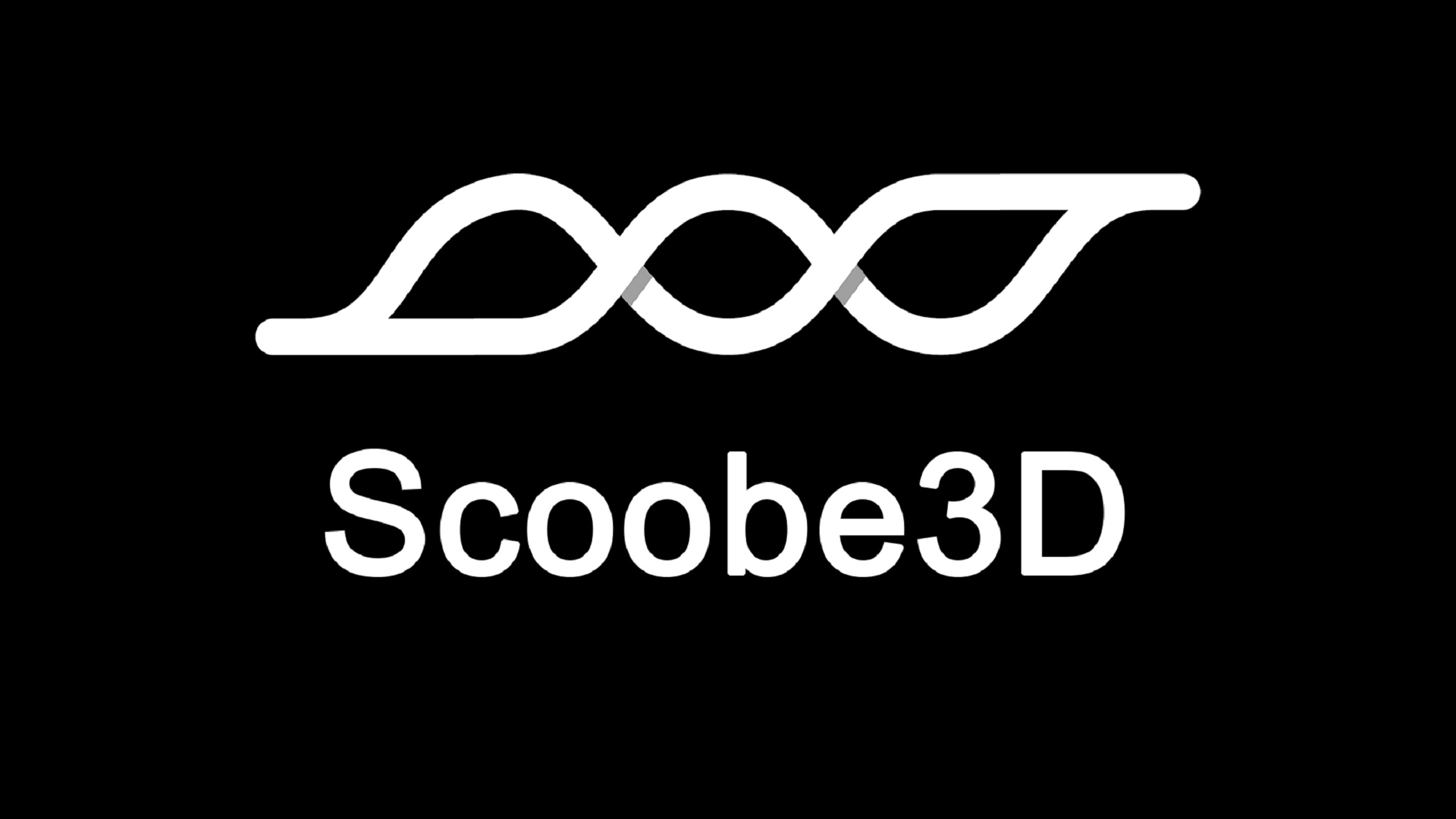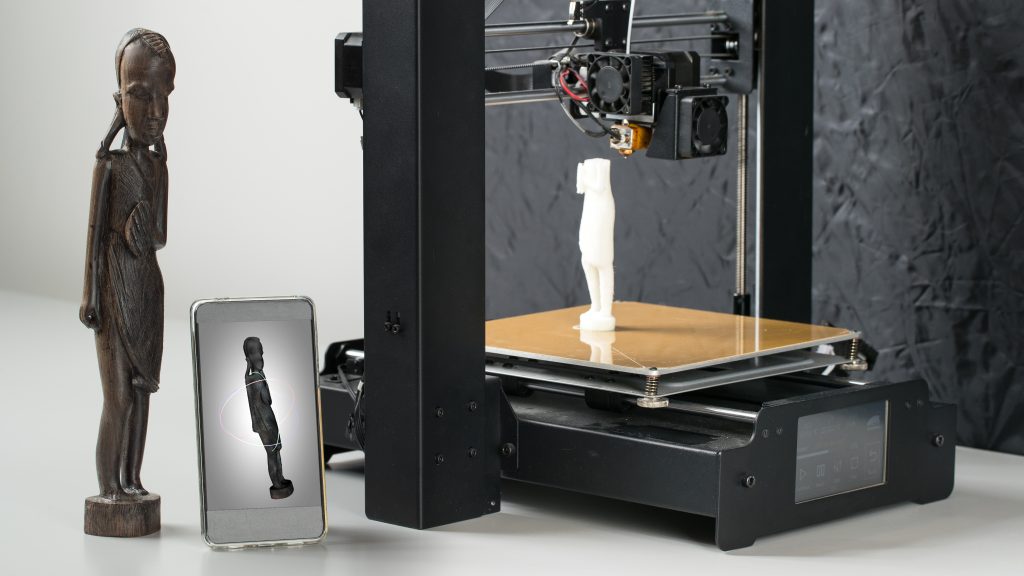

Scoobe3D is a novel 3D Scanning technology that is now available on Kickstarter. Scoobe3D aims to make 3D scanning and easy to use technology that can let anyone get accurate handheld scans. 3D scanning has been around for decades but the technology is clunky, expensive and often requires many repeat scans to get a file right. Enterprise customers can use high-end scanning equipment butt often this costs hundreds of thousands of Dollars. Even then different scanners are suited for different applications. Some scanners are good at scanning as long as the object isn’t shiny or require you to place stickers all over the object for them to work. Make one false move and you have to start all over again. Other scanning rigs fill rooms or require complex turntable devices. 3D scanning, even when it does work well, often requires a lot of clean up of the files in CAD. Most users want 3D scanning because the objects they want to scan are very complex to do in CAD so this undermines the entire purpose of scanning it. The dream of 3D scanning is still far ahead of the current finicky capabilities, however. Even high-end systems are complex to use and require a lot of skill, often specific to that scanning technology. There are some low-cost 3D scanning options out there but often they require a lot of hand-holding, literally and figuratively.

The Scoobe3D aims to change all of this by intelligently combining three different scanning technologies into one device. By using each scanning technology to reinforce and correct the other the Scoobe3D wants to make scanning easy, replicable and quick. The dedicated Scoobe3D device combines all of the hardware you need into a small light easy to hold device. Whatsmore any kind of hand tremor or shake that usually messes up a scan is overcome by the Scoobe3D. One can even put down the device mid scan and resume it later. The Scoobe3D is portable, easy to use and can be used without any upfront training. Due to the new technology, the output files from the Scoobe3D require no costly and time-consuming post-processing in CAD.

There are two versions of the Scoobe3D: Basic uses the new polarization 3D scanning technology. It has an accuracy of 0.5 mm for small objects of 20 cm x 20 cm. One would need a scanning base to use this unit and it is less usable than the Scoobe3D.
The Scoobe3D has polarization with an additional camera. It can be used to scan a room of up to 300 square meters (3000 square feet). It can also be used to scan large objects measuring three by three meters. It can do this up to an accuracy of 0.1mm.
How does it work?

The Scoobe3D 3D scanner is a patent pending device based on polarization. In addition to polarization 3D scanning, it combines two other tried and true 3D scanning technologies as well. Time of Flight and Photogrammetry 3D scanning are combined with Polarization to make for a trio of technologies that reinforce and improve each other. Time of Flight 3D Scanning measures the time that a ray of light takes to reach an object. Time of Flight 3D scanning is very fast and ignores many of the problems other technologies have with speed and surface textures. Photogrammetry uses a regular camera lens to capture image information from the object. Photogrammetry usually requires many lenses and a separate stitching together process and is therefore not as fast. It is also poor at determining where exactly points on the object are in relation to each other. It is however excellent at capturing the definition, texture and color of an object. By combining photogrammetry and Time of Flight the Scoobe3D takes a fast process that knows where each point of your object is and combines it with a technology that knows what that point looks like. This gives one the best of both worlds.
But, the Scoobe3D’s true genius comes to the fore by adding Polarization 3D Scanning to the mix. What Time of Flight creates is a depth map that shows a whole bunch of points corresponding to your object. This depth map is a kind of paint by numbers in 3D guide to the edges of your object. Often these depth maps have holes, fuzzy areas and areas with little to no information in them at all. If one overlays a photogrammetry series of images on that depth map (and aligns them perfectly!) then one has a rich tapestry of color to show. If we compare this process to pitching a tent, we’d have a frame that was solid and we will have draped our tent canvas on top of it. If you’ve ever set up a tent you know that so far it looks like we’ve come a long way but the difficult bit is just beginning. Only when we combine the canvas and the frame correctly do we get a working tent. This element is taken care of by Polarization 3D Scanning. Through Polarization 3D Scanning the image is polarized. This polarization brings out more texture and detail that let us match up every point precisely. So if Time of Flight is the tent frame, Photogrammetry is the canvas and Polarization 3D Scanning are the instructions. Through this unique combination, the Scoobe3D gives you faster, quicker and more accurate results than other technologies.
Who is behind Scoobe3D?

Julian Berlow studied physics with a specialization of solid state physics and optics. He worked as a team leader in R&D at BMW group and Quiss AG. Julian has made optics instruments, optical 3D inspection systems and has done additional work in image processing. His extensive very specialized experience all came together to allow him to make a discovery in 2015 in the field of Polarization 3D Scanning. He subsequently patented this discovery and has been working to turn it into a product since 2017. In addition to four hardware prototypes and countless software revisions, the team has reached out to the hardware community. Julian, now joined by eight others to help him interviewed over 200 community members at Maker Faires to discover their needs. This lead them to focus on an independent pocketable handheld device. This device was improved numerous times and additional patents were filed. Now the Scoobe3D team is ready to unveil the Scoobe3D to the world.

Want to have your own Scoobe3D for your business or hobby? You can check out the specifications of the Scoobe3D here or head over to the Kickstarter that went live today here.
Subscribe to Our Email Newsletter
Stay up-to-date on all the latest news from the 3D printing industry and receive information and offers from third party vendors.
You May Also Like
3D Printing Webinar and Event Roundup: April 14, 2024
We’re starting off the week’s 3D printing webinars and events at ASTM AMCOE’s 11th Snapshot Workshop and MACH Exhibition. Stratasys continues its advanced training courses, SME is holding a virtual...
Westinghouse Achieves Serial 3D Printing of Nuclear Power Part
According to the “Additive Manufacturing in the Energy Sector: Market Analysis & Forecast” report from Additive Manufacturing Research (AMR), the energy sector saw $2.6 billion worth of 3D printing activity...
New EOS M 290 1kW Enables Copper 3D Printing for New Space, Automotive, and More
EOS has released a new EOS M 290 1kW metal powder bed fusion (PBF) system, designed specifically with copper in mind. Initially developed by its custom machine building subsidiary, AMCM,...
What’s Next for Additive Manufacturing Materials?
As many additive manufacturing (AM) users and engineers know, material science is just as important as the industrial 3D printing technology itself. Both work in tandem to help manufacturers reach...































